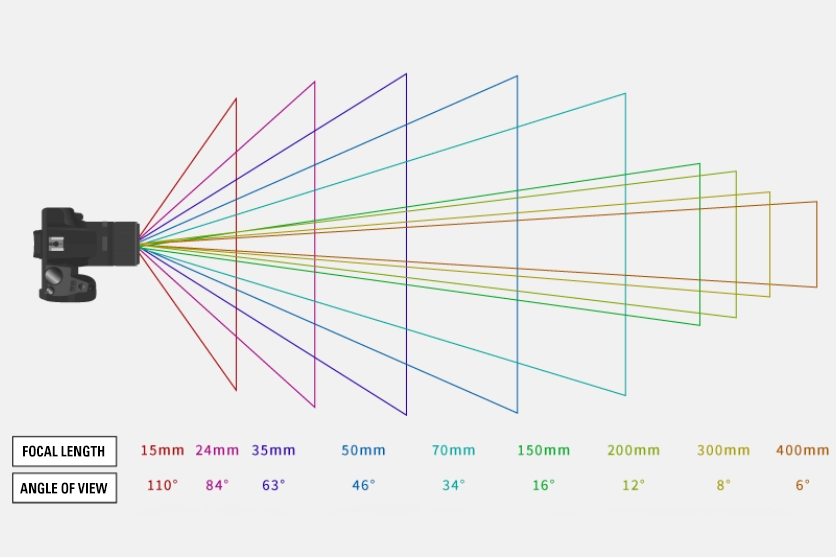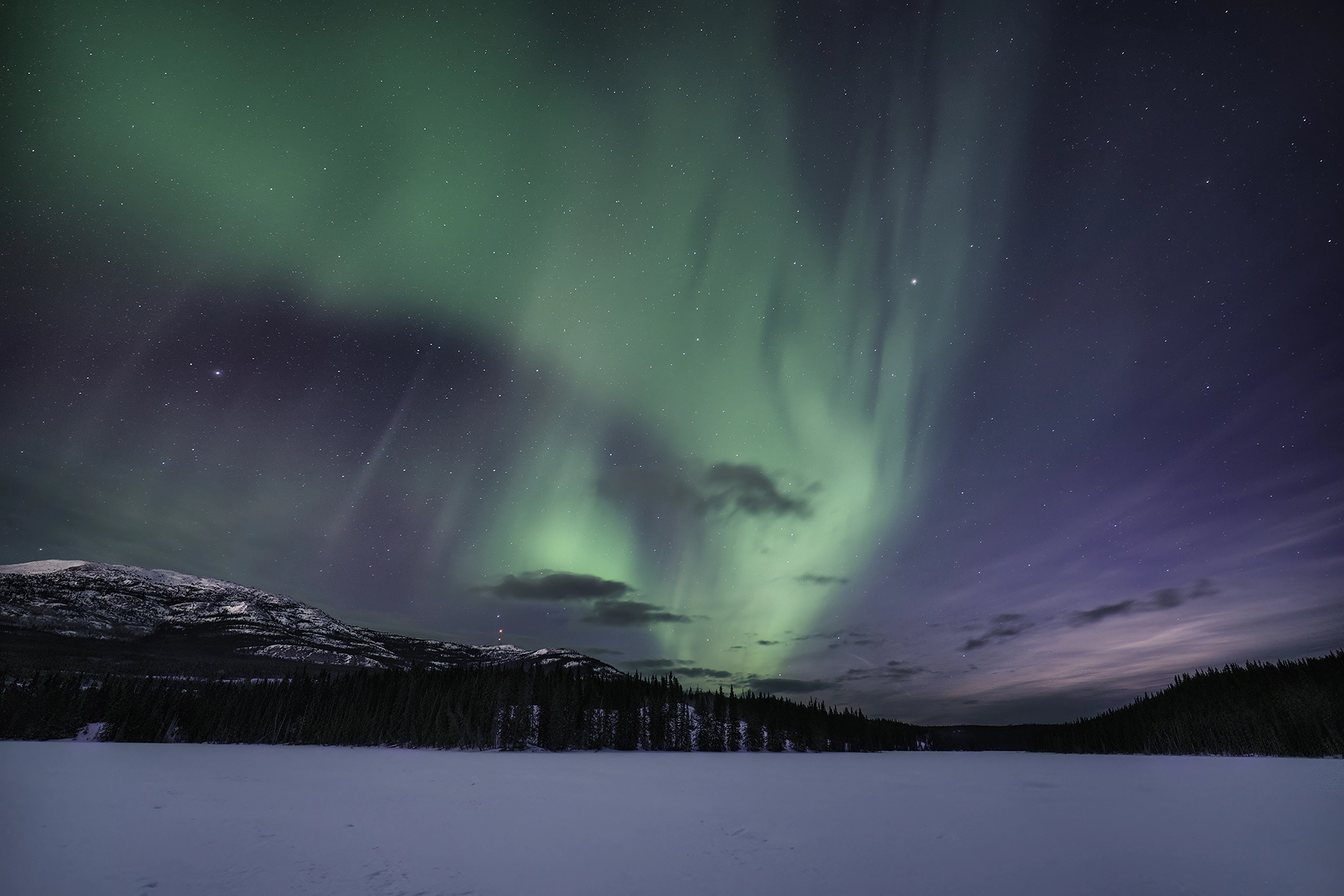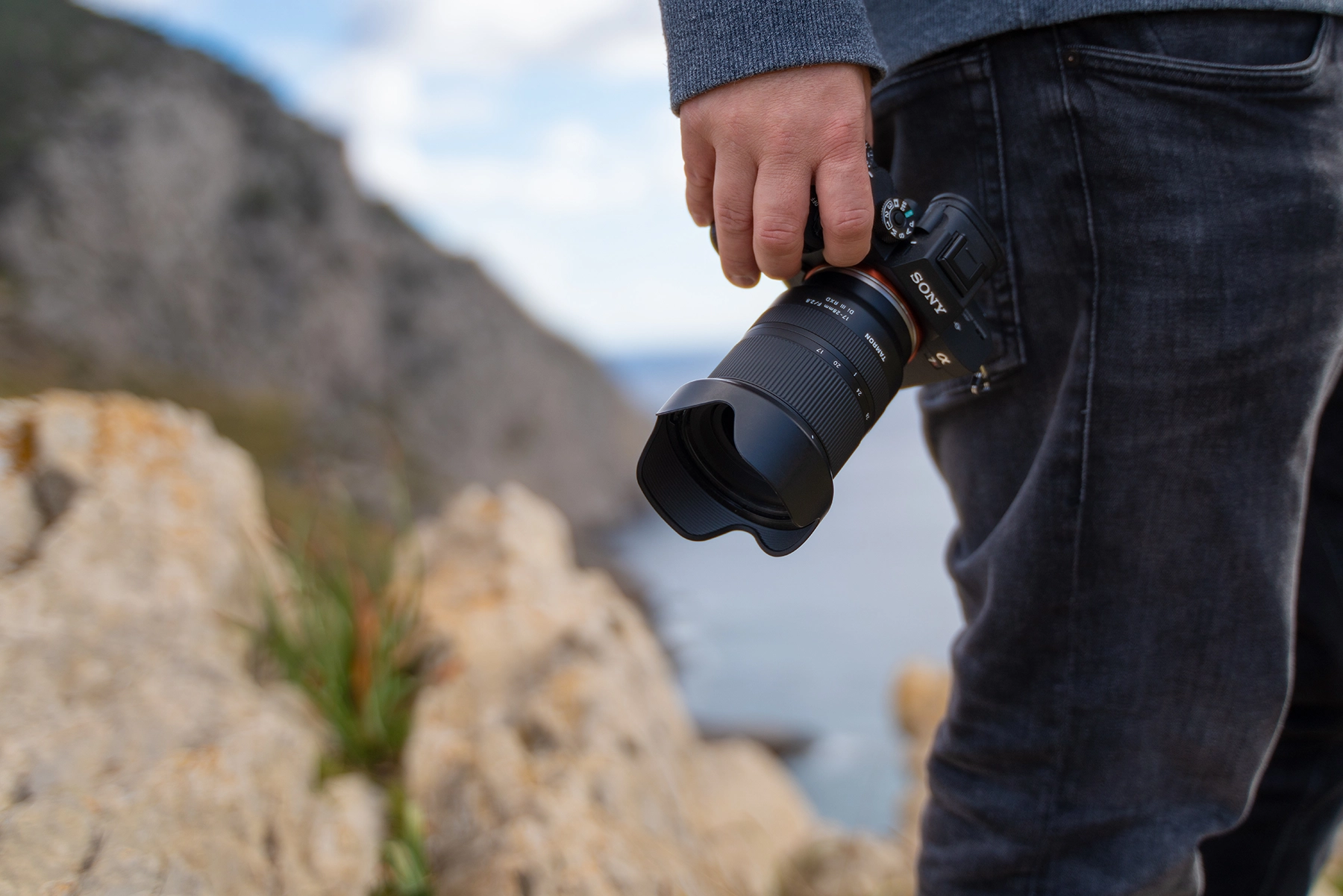Understanding angle of view is essential to capturing the images you envision when using an interchangeable-lens mirrorless camera. For photography beginners looking to advance their skills, this concept can feel a bit abstract at first. In this article, we’ll break down what angle of view means, how it relates to different types of lenses, and what to consider when choosing the right lens for your creative goals.
What You Will Learn In This Article:
- The definition of angle of view and how it’s measured in camera lenses
- How focal length affects angle of view and overall photo composition
- Differences between wide-angle, standard, and telephoto lenses
- When to use a prime lens vs. a zoom lens for optimal results
- Key factors to consider when selecting a lens for your mirrorless camera
What is Angle of View?

Angle of view refers to the extent of a scene captured by a camera, measured as an angle. In lens specifications, it’s typically represented as the diagonal angle of the image frame. The wider the angle of view, the broader the area the lens can capture within a single shot.
Relationship Between Angle of View and Focal Length
Generally, lenses are divided into the following types according to focal length:
- Wide-angle lens: Approximately 35mm or less (approximately 63° angle of view)
- Standard lens: Approximately around 50mm (approximately 46° angle of view)
- Telephoto lens: Approximately 80mm or more (approximately 30° angle of view)
The shorter the focal length, the wider the angle of view, and the longer the focal length, the narrower the angle of view. Changing the angle of view can greatly affect the impression and composition of the photograph you take.
Let’s take a look at the characteristics of each lens.
The Difference Between a Prime Lens and a Zoom Lens
Camera lenses can be divided into “prime lenses” and “zoom lenses” depending on whether their focal length can be changed. For example, if the lens name has “20mm” written on it, it is a prime lens, and if it has a range of numbers such as “28-75mm,” it is a zoom lens.
A prime lens has a fixed focal length, so to change the angle of view, you must physically move closer to or farther from your subject. One advantage of prime lenses is that they often feature a wide maximum aperture, allowing more light into the lens and producing a stronger bokeh effect.
In contrast, zoom lenses offer a variable focal length, allowing you to adjust the angle of view without changing your position. This flexibility makes it easy to reframe your composition on the spot.
What are the Characteristics of Wide-Angle Lenses?
A wide-angle lens generally refers to a lens with a focal length of approximately 35mm or less (approximately 63° or more). Wide-angle lenses are characterized by not only a wide angle of view, but also a deep depth of field (the area in front of and behind the subject that appears to be in focus). They also emphasize the sense of perspective, making distant subjects appear even farther away. This creates a sense of depth, dynamism, and scale in the landscape. They are often used when photographing vast natural landscapes, cityscapes, starry skies, and night scenes.
Ideal Subjects to Photograph with a Wide-Angle Lens

In particular, using a wide-angle lens when photographing natural scenery lets you dynamically express the majesty of nature. A wide-angle lens can capture a wider range than the human eye can see, allowing you to take photos with a different impact than what you can see with the naked eye. Using a diagonal composition—placing the subject along the diagonal of the frame—enhances the sense of depth and perspective unique to wide-angle lenses.
An example of a diagonal composition taken in the wide-angle range

What are the Characteristics of a Standard Lens?
A standard lens generally has a focal length of about 50mm (about 46°) and features an angle of view close to the human field of vision. It is a lens that is ideal for capturing unadorned photos and realistic impressions of a scene, as it allows you to capture the scene as if you were looking directly at the subject with a natural sense of distance. It is used in many genres, including portraits, snapshots, table photos, and landscape photos.
Ideal Subjects to Photograph with a Standard Lens

By taking advantage of the natural distance and blur effect, you can take beautiful portrait photos that are typical of an interchangeable-lens mirrorless or DSLR camera. It is also recommended for taking snapshots of casual street scenes, eye-catching buildings, flowers, etc., and you can take photos with a sense of realism.
Even when taking pictures of everyday scenes with family, friends, or pets, you can express a warm atmosphere and a sense of intimacy.
What Are the Features of a Telephoto Lens?
A telephoto lens generally refers to a lens with a focal length of approximately 80mm or more (30° or less). It has a narrow angle of view, allowing distant subjects to be captured in a large size, and has a shallow depth of field. Another feature of telephoto lenses is the compression effect, which makes distant objects appear larger and closer. For this reason, they are used when photographing distant subjects such as sports or animals, as well as for portrait and landscape photography, taking advantage of the background blur and compression effect.
Recommended Scenes for Shooting with a Telephoto Lens

By using a telephoto lens, you can take close-up shots of your subject, such as sports and wildlife, where you cannot get close to take photos, as well as in athletic meets and recitals. In addition, because the angle of view is narrow and the amount of background information is reduced, you can focus on the subject’s expression or a specific part. Furthermore, by using a large background blur, the impression of the person is emphasized even in portraits.
Points to Consider When Choosing a Lens for Your Mirrorless Camera
From here, we will introduce some points to pay attention to when choosing a lens for a single-lens camera. When choosing a lens, you should consider not only the angle of view (focal length) but also ease of use such as the maximum aperture and weight.
Check the Maximum Aperture (F-number)
F-number (aperture value) is a number that indicates the amount of light that enters through the lens. The number when the lens aperture is opened to the maximum is called the “maximum F-number,” and the smaller this number is, the more light can be taken in. For example, it has the advantage that you can shoot at a fast shutter speed even in dark places, making it easier to prevent camera shake.
Also, the larger the F-number, the less blurred the background will be, and the smaller the number, the stronger the blur that can be created.
Easy to carry

If you are concerned about portability, it is a good idea to choose a lightweight and compact lens. Lightweight lenses have the advantage of being easy to carry when traveling or going out. Compact lenses also increase mobility when shooting, making it easier to shoot from a variety of positions and angles.
Lens Angle of View (Focal Length)
As mentioned above, the angle of view changes depending on the focal length of the lens, so be sure to check the focal length that the lens can cover. With a high-magnification zoom lens that has a wide range of focal lengths, you don’t need to carry multiple lenses and can shoot a variety of subjects and scenes with just one lens.
Minimum Focusing Distance

The minimum shooting distance refers to the shortest distance between the camera and the subject you want to shoot that can be focused on. This may be called the Minimum Focus Distance (MFD) or Minimum Object Distance (MOD) when you evaluate the lens specifications. If you get closer to the subject than the minimum shooting distance, the focus will be lost, so if you want to get close to the subject, choose a lens with a short minimum shooting distance. It also allows for close-up shots like a macro lens, which increases the variety of expressions. The above example was taken with a wide-angle lens’ minimum shooting distance, but it is also possible to take wide macro shots that get closer to the subject while capturing the wide range that only a wide-angle lens can provide.
AF (Autofocus) Performance and Image Stabilization
A lens equipped with a high-performance AF unit allows for quick and accurate focusing. Also, if the lens is equipped with an image stabilization mechanism, it becomes easier to take stable shots of moving subjects.
Learn more about Tamron’s AF technology >
Learn more about Tamron’s image stabilization technology >
Tamron Lenses Recommended for All Levels of Photographers and Hybris Shooters
Tamron produces lenses that cover a wide angle of view and are characterized by their lightweight and compact size while achieving high image quality. They also have high functionality such as AF, and many lenses are easy to use even for beginners. And many lenses offer compatibility with the TAMRON Lens Utility™ software and mobile app for customization of your lens and firmware updates.
Learn about the TAMRON Lens Utility™ >
If you are considering a second lens, be sure to check out these top lenses.
Wide-Angle Zoom Lens
- 16-30mm F/2.8 Di III VXD G2 (Model A064) for Sony E and Nikon Z full-frame: Building on its predecessor, the 16-30mm F2.8 G2 expands the zoom range while remaining compact and lightweight. It delivers high image quality, faster AF performance, and an updated ergonomic design. Compatible with the TAMRON Lens Utility™, it offers customizable video and photo functions—enhancing wide-angle creativity with improved mobility, practicality, and ultra-wide-angle expression.
- 17-50mm F/4 Di III VXD (Model A068) for Sony E full-frame: The 17-50mm F4 is a versatile wide-angle zoom lens with high image quality across the range, including edge-to-edge clarity. Its quiet and fast VXD AF motor and internal zoom design suit gimbal use. With close-focusing capability and broad focal range, it’s ideal for stills and video, enabling dynamic, creative shots without changing lenses.
- 11-20mm F/2.8 Di III-A RXD (Model B060) for Sony E, Canon RF, and Fujifilm X APS-C: The 11-20mm F2.8 is compact, lightweight, and delivers high image quality with a large aperture. Ideal for APS-C mirrorless cameras, it excels in close-up shooting with a 5.9” minimum focus at 11mm. Its quiet RXD AF motor suits video, while weather-resistant construction and anti-fouling coating make it perfect for outdoor and everyday use.
Standard Zoom Lens
- 20-40mm F/2.8 Di III VXD (Model A062) for Sony E full-frame: The 20-40mm F2.8 is a compact, lightweight standard zoom lens covering ultra-wide to standard views. Despite its portability, it delivers stunning image quality across the range. Ideal for stills and Vlogs, it features a fast, quiet VXD AF motor. This versatile, large-aperture lens is perfect for everyday carry and creative video or photo shooting.
- 28-75mm F/2.8 Di III VXD G2 (Model A063) for Sony E and Nikon Z full-frame: The 28-75mm F2.8 G2 is the evolved second-generation model of the popular A036. It offers enhanced image quality, faster, more precise AF, and improved ergonomics. With a minimum focus distance of 7” and 1:2.7 magnification, it excels in close-ups. Customizable via the TAMRON Lens Utility™, it’s a versatile, high-performance standard zoom for creative work.
- 35-150mm F/2-2.8 Di III VXD (Model A058) for Sony E and Nikon Z full-frame: The 35-150mm F2-2.8 offers an ultra-fast F2 aperture at 35mm and covers key portrait focal lengths up to 150mm. It delivers outstanding image quality, fast and precise VXD-driven AF, and improved design for better handling. With support for the TAMRON Lens Utility™ software, this all-in-one lens is ideal for dynamic, professional portrait and travel shooting.
- 17-70mm F/2.8 Di III-A VC VXD (Model B070) for Sony E and Fujifilm X APS-C: The 17-70mm F2.8 VC is a versatile standard zoom for APS-C mirrorless cameras, offering a 4.1x zoom range (25.5–105mm equivalent). It delivers high resolution edge to edge, with VC image stabilization, quiet AF, and minimal focus breathing. Ideal for everyday use, it supports both stills and video with the quality of a constant F2.8 aperture.
Telephoto Zoom Lens
- 50-300mm F/4.5-6.3 Di III VC VXD (Model A069) for Sony E full-frame: The 50-300mmVC is a compact telephoto zoom lens offering 6x zoom coverage from standard to super-telephoto. Designed for full-frame mirrorless cameras, it delivers excellent image quality, fast and quiet AF, and reliable performance. Ideal for capturing sports, wildlife, and distant subjects with ease—without the bulk of traditional telephoto lenses. Compatible with the TAMRON Lens Utility™.
- 70-180mm F/2.8 Di III VC VXD G2 (Model A065) for Sony E full-frame: The 70-180mm F2.8 G2 is the evolved second-generation model of the popular A056, now featuring TAMRON’s VC image stabilization. It maintains its class-leading compactness while delivering redesigned optics for exceptional image quality. With a reduced minimum focus distance of 11.8”, it enhances versatility, enabling unique close-up and telephoto expressions in both stills and video. Customizable with the TAMRON Lens Utility™.
- 70-300mm F/4.5-6.3 Di III RXD (Model A047) for Sony E and Nikon Z full-frame: The 70-300mm F4.5-6.3 is a lightweight, compact telephoto zoom designed to make long-range photography more accessible. Special glass elements minimize aberrations for sharp images and smooth bokeh. The quiet and fast RXD AF motor excels in handheld shooting—perfect for landscapes, sports, aviation, portraits, and everyday snapshots with full-frame mirrorless cameras.
Ultra-Telephoto Zoom Lens
- 50-400mm F/4.5-6.3 Di III VC VXD (Model A067) for Sony E and Nikon Z full-frame: The 50-400mm VC is an 8x ultra-telephoto zoom lens for full-frame mirrorless cameras, offering high image quality in a compact body similar to 100-400mm lenses. With VXD AF, VC stabilization, and 1:2 macro capability, it excels in sports and wildlife. This lens delivers exceptional versatility, mobility, and performance across a wide focal range. Customizable with the TAMRON Lens Utility™.
- 150-500mm F/5-6.7 Di III VC VXD (Model A057) for Sony E, Fujifilm X, and Nikon Z full-frame: The 150-500mm F5-6.7 offers super-telephoto reach in a surprisingly compact, handheld-friendly design. It delivers high image quality at 500mm without compromise. Equipped with fast, precise AF and TAMRON’s VC image stabilization, it ensures excellent tracking and stability, making it easy to explore distant subjects with confidence—perfect for wildlife, sports, and dynamic outdoor photography.
All-In-One Zoom Lens
- 28-200mm F/2.8 Di III RXD (Model A071) for Sony E full-frame: The 28-200mm F2.8-5.6 is the world’s first high-magnification zoom lens to start at F2.8. Incorporating Tamron’s advanced zoom expertise, it delivers impressive image quality throughout the entire 28–200mm range. Compact and versatile, this all-in-one lens is ideal for travel and everyday shooting, offering both wide-angle and telephoto performance in a single, lightweight package.
- 28-300mm F/4-7.1 Di III VC VXD (Model A074) for Sony E full-frame: The 28-300mm VC is a versatile all-in-one zoom lens for full-frame mirrorless cameras, covering wide to super-telephoto. Compact and lightweight, it offers convenience without sacrificing image quality. With fast, quiet AF and reliable performance, it’s perfect for travel, everyday use, and capturing diverse subjects without changing lenses. Customizable with the TAMRON Lens Utility™.
- 18-300mm F/3.5-6.3 Di III-A VC VXD (Model B061) for Sony E, Canon RF, Fujifilm X, and Nikon Z APS-C: The 18-300mm VC offers a 16.6x zoom ratio, covering wide-angle to super telephoto. Its VXD linear motor delivers fast, quiet AF, while specialized glass elements ensure edge-to-edge image quality. With strong close-up capability and built-in VC stabilization, this all-in-one lens provides outstanding versatility and performance for everyday photography and travel, in any situation.
Summary: Know the Angle of View and Use Different Lenses to Bring Your Vision to Life
As we’ve seen in this article, understanding the angle of view is extremely important in order to take the image you want with a single-lens camera. Lenses are generally divided into three categories based on focal length: wide-angle lenses, standard lenses, and telephoto lenses. Each lens has a different angle of view and is best suited for different shooting scenes, so it’s a good idea to use them according to the subject you’re shooting and the effect you want to create.
Learn about Tamron lenses at an authorized Tamron dealer near you or visit the TAMRON Store.
